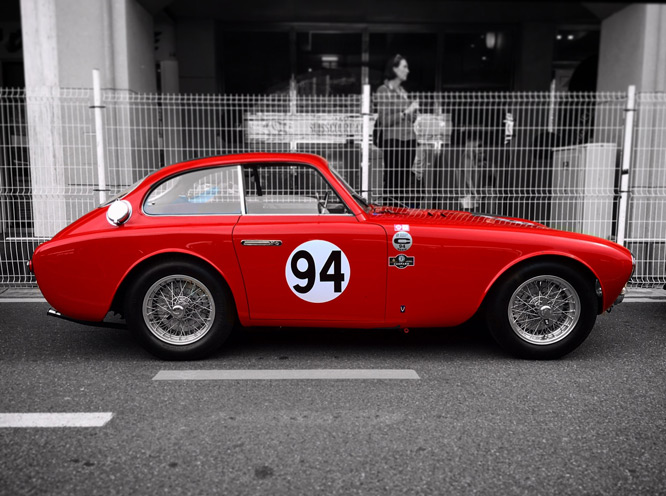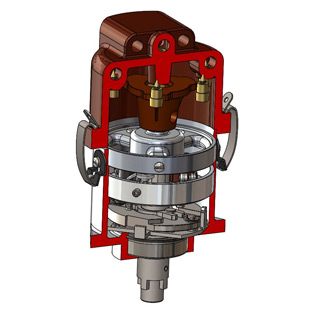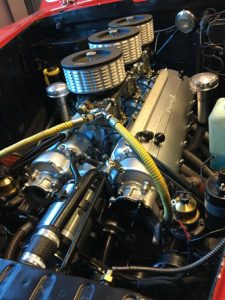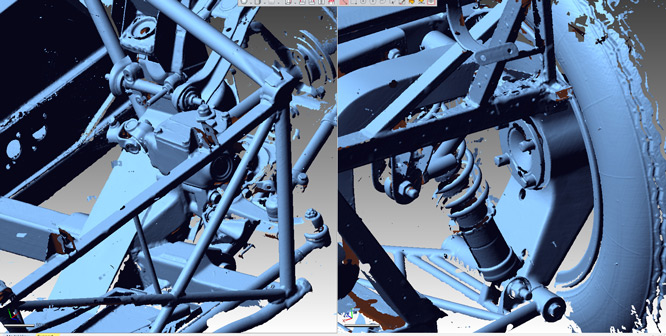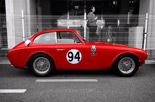January 17, 2017
The Black Art of Reverse Engineering with SOLIDWORKS See the articleA VINTAGE FERRARI PARTICIPATES AT THE MONACO GRAND PRIX THANKS TO THE HANDYSCAN 3D
Creaform was mandated by NT CADCAM to use its 3D scanning technologies to reverse engineer a 1952 Ferrari. The engine had fallen to pieces and the team only had 8 weeks to get it running before the Monaco Grand Prix, we were pleased to hear that Creaform’s technology helped them achieve their goal.
UK’s company Redesign Sports Ltd (RSL) discovered that while the car had just been given a fresh engine build and a check over in the U.S.A., when it was fired up, a connecting rod—which moves the pistons up and down—came out of the side of the engine. Upon stripping the fresh engine, they found that every nut and bolt had been left loose during the original rebuild. The prognosis was terminal, but the car needed to be repaired before the Monaco Grand Prix, eight weeks later. While the team had a vast experience in restoring antique vehicles, it was still a tall order.
They had been restoring historic vehicles since 2006, but as the parts got harder to source, and the cars rarer and rarer, they realized they needed to take matters into their own hands. “The vehicles we work on are one of a kind, but it doesn’t matter how much a customer is willing to spend, they won’t be going anywhere because finding old parts or getting them remade is horrendously difficult,” admitted RSL’s owner.
Can a 3D scanner help with reverse engineering?
According to RSL, in the last three to five years there has been a revolution in the 3D scanning technology available. They think that scanners massively improve accuracy and time in reverse engineering cars and their associated parts. They also think it reduces the mental fatigue of engineers who, in the past, would have relied on traditional methods or to model a component from memory.
“At RSL we did a lot of market research before we opted for a Creaform HandySCAN 700. I had a demo and the salesman could scan half the car in 15 minutes. That was a game changer for me. It comes with the scanning software VXelements, which scans to mesh directly rather than other scanners which scan as a point cloud and then convert to a mesh,” explained RSL’s owner. “It means you can see in real time how much information you have got and if need be, change things like the resolution or laser intensity on the fly. If I’m scanning across two different materials, e.g. from a highly polished red paint to rubber, I can change the shutter setting and change the intensity of the laser halfway through.”
Using the power of HandySCAN 3D, the best 3D scanner for reverse engineering, they modelled the data in reverse engineering software, which was then transferred into SOLIDWORKS 3D CAD software. Five days later, 12 pistons went into production and the new parts were ready three weeks later.
“We remodeled every single component in the same way and sent all the parts out to different manufacturers. The parts had only ever been together on the screen in SOLIDWORKS, but when they all arrived they fitted perfectly together straight away. I knew they would, but it was still an amazing feeling when they did,” said RSL’s owner. “The car drove magnificently in Monaco and after a quick check-up in the UK it was delivered to Heathrow for its flight back to the U.S.A.”
Based on original text by Chris Horn – Managing Director of NT CADCAM

